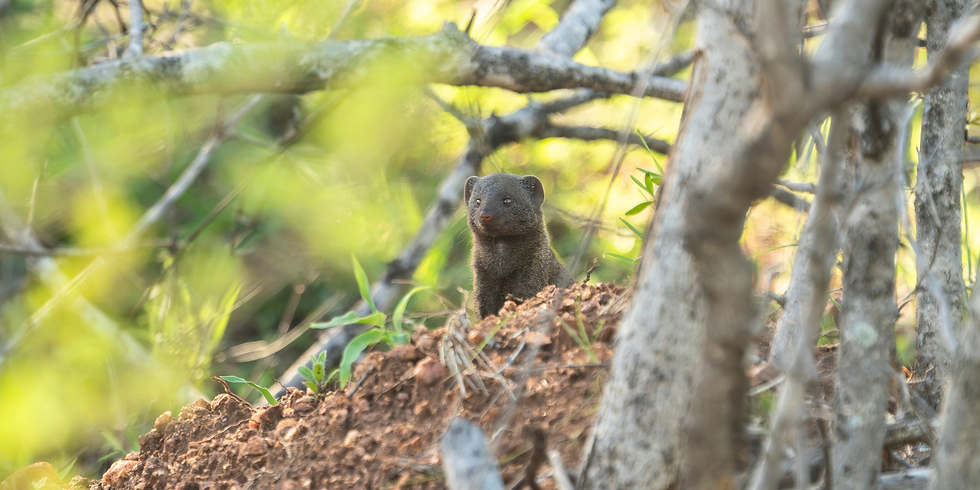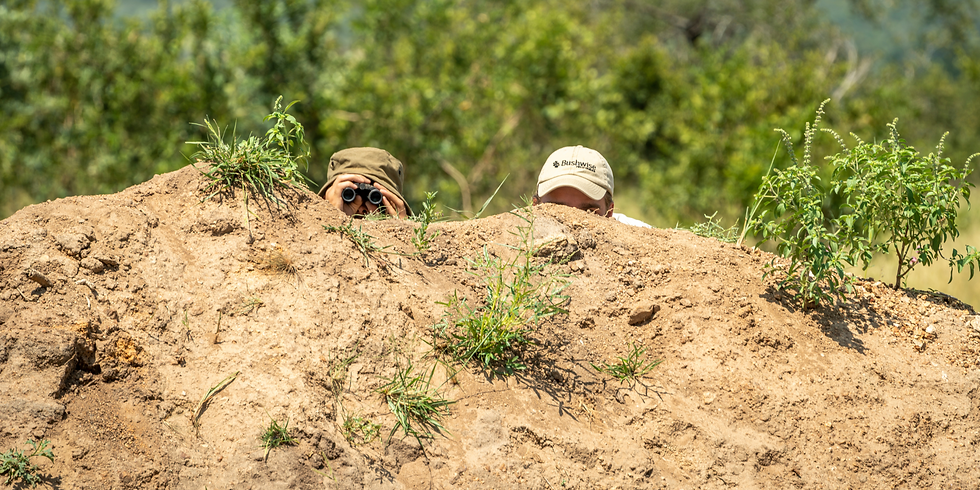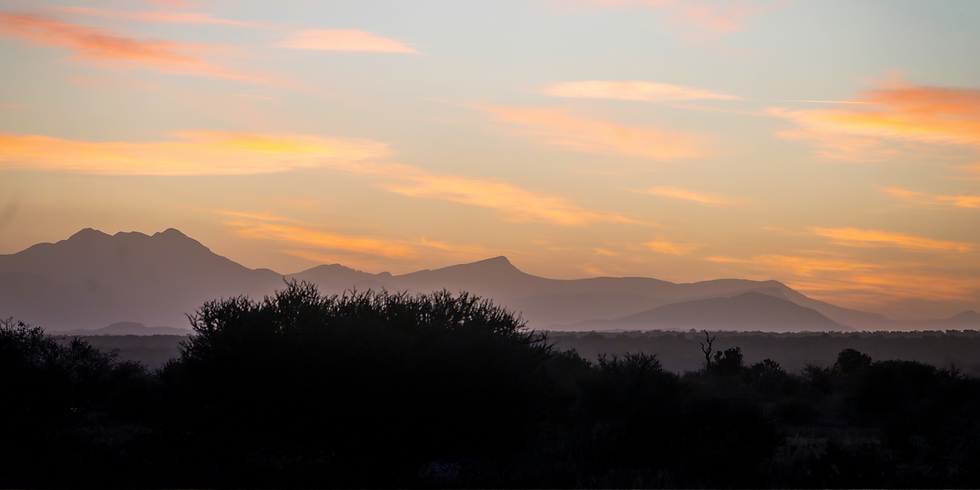The dwarf mongoose: Small body, big story
- Bushwise Trainer

- Jul 11
- 3 min read
The dwarf mongoose is Africa’s smallest carnivore, and one of its most entertaining. Found across a wide range of habitats in sub-Saharan Africa, from dry savannas to open woodlands, this tiny mammal punches well above its weight when it comes to personality, intelligence, and teamwork.

Fully grown, a dwarf mongoose weighs less than half a kilogram and is no longer than a school ruler. But what they lack in size, they more than make up for in social smarts. These animals live in close-knit groups of around 8 to 15 individuals, though sometimes you’ll see gangs of 20 or more. The group is usually led by a dominant female and male, and while they do most of the breeding, everyone plays a role in raising the pups, foraging for food, and keeping watch for predators.
Teamwork is key. Dwarf mongooses are constantly communicating, using chirps, squeaks, and trills to stay in touch and alert one another to danger. While the group forages, one mongoose often takes on the role of sentry, climbing onto a rock or tree stump to keep lookout. If a threat is spotted, like an eagle or a snake, a sharp alarm call sends the whole group looking for cover.

Their diet mainly consists of insects like beetles, grasshoppers, larvae, and termites, but they’ll also snack on small lizards, eggs, and the occasional fruit. They use their sharp claws to dig into soil or pry open bark, sniffing out anything edible. They’re not fussy eaters, and their small size means they can access food sources that larger predators might overlook.
Dwarf mongooses are most often found living in abandoned termite mounds, which offer plenty of entrances and hidden chambers that are perfect for sleeping, hiding, and raising young. These dens are the centre of their world. At night, the group piles in together to rest, and in the mornings, they groom one another before heading out to forage.

Pups are usually born during the wet season, when food is more plentiful. A litter typically includes two to four pups, and although only the dominant female breeds, everyone in the group helps care for the young. It’s common to see babysitters staying behind at the den while the rest of the group goes out, or adults sharing food with hungry pups to help them grow.
Although dwarf mongooses are not endangered, they do face some challenges. Habitat loss from agriculture and development can reduce their range, and the destruction of termite mounds, often unintentionally, removes vital shelter. They’re also vulnerable to natural predators like snakes, birds of prey, and jackals. But their alertness, speed, and social structure give them a good chance of survival.

They might not be as famous as lions or elephants, but dwarf mongooses are a vital part of the African ecosystem. They control insect populations, serve as prey for larger animals, and show just how effective cooperation in the wild can be. For anyone lucky enough to spot them on safari, watching a group of dwarf mongooses darting in and out of a termite mound or chattering to each other in the grass is always a highlight. Small, scrappy, and full of character, they’re proof that great things really do come in small packages.
Want to see species like the dwarf mongoose in their natural environment, while gaining practical knowledge and guiding skills? Bushwise offers a range of wildlife courses for you to experience and learn about Africa’s wildlife firsthand.



